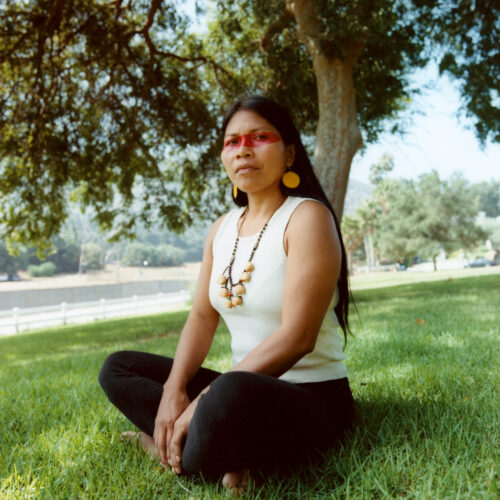Peruvian Filmmaker Claudia Llosa’s “Fever Dream” wastes no time delivering on the promises of its title. Its opening moments are a barrage of disorienting imagery and unbodied narration as Llosa offers answers to questions that haven’t been asked yet. Amanda (María Valverde) is being dragged through the forest; by who, or what, she doesn’t know. The voice of a young boy demands they go back to the beginning, to figure out where it all went wrong – to the exact moment where Amanda realized she couldn’t save her daughter.
Picking up a few weeks earlier, Amanda is relocating for her husband’s job, this time to a farmhouse outside of Santiago, Chile, with her young daughter, Nina (Guillermina Sorribes Liotta). Together, they try to make the most of yet another new life. After meeting the neighbors, Carola (Dolores Fonzi) and her son David (Emilio Vodanovich), Amanda learns that her new home isn’t the idyllic countryside manor she imagined. Director Claudio Llosa’s first film in almost a decade is a bold and uncompromising vision, mostly unconcerned with linearity but instead focuses on decisions made in service of one another, unknowingly, and the kinds of consequences one could never fathom, let alone prepare for. You know, like parenthood.
“Fever Dream,” an adaptation of Samanta Schwelbin’s 2014 novel “The Rescue Distance,” is the latest product of Llosa’s fascination with imperfect mothers. Her last film, “Aloft,” reunited a mother with the son she had abandoned 20 years prior, and her breakout hit, “The Milk of Sorrow,” introduced audiences to a woman afflicted with a disease passed through breast milk tainted by trauma. But this latest effort feels especially preoccupied with finality, both in life and in the relationship between mother and child. Llosa had just given birth to her second child before starting production on this film, and she seems to have channeled every last feeling of helplessness and mortal terror about motherhood into this project.
Even when Llosa’s narrative intentions dip into murkier territory, “Fever Dream” commands attention by being one of the most visually engaging films of the year. Spanish cinematographer Oscar Faura’s dreamlike images border on the dissociative, employing a Lynchian quality that suggests a manicured beauty obscuring the poisoned sediment just below the surface. Where “Fever Dream” falters is in its attempts to literalize that notion. The climactic twists and reveals that ground the story in some kind of identifiable reality are distracting when they should be poignant, or at least emotionally resonant in some way that they aren’t. Glimpses of the surrounding town are welcome diversions, most notably the scores of deformed children that walk the streets, but these developments are ultimately inconsequential and are never fleshed out past their immediate function from scene to scene. Despite some effective worldbuilding, “Fever Dream” often has trouble pulling itself away from the abyss it gazes into so comfortably.
Even still, “Fever Dream” is content to demand so much from its audience precisely because it delivers just as generously. Its themes of maternal anxiety resonate both with Schwelbin’s novel and Llosa’s previous work. The name may have been changed, but the unceasing dread that informs the source material’s title is present in Llosa’s adaptation. Amanda herself explains what the rescue distance is — the distance between you and whatever danger your child is in — several times throughout the film, but as its title suggests, “Fever Dream” is, first and foremost, a sensory experience. Its 93 minutes feel like both an instant and an eternity as all of the film’s machinations build to a third act that is well worth the uncertain, often twisty, road that leads to it.
Grade: B+









